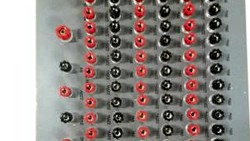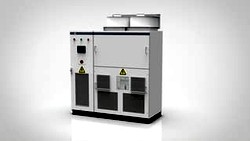As the world grapples with the challenges of climate change and the need to reduce greenhouse gas emissions, the focus on transitioning to cleaner and more sustainable energy sources has never been more critical. One area that has garnered significant attention is the electrification of heating and cooling systems in residential and commercial buildings. Traditional fossil fuel-based systems, such as oil and gas furnaces, contribute significantly to global carbon emissions. In contrast, electric heat pumps and other innovative technologies offer a more environmentally friendly alternative. This article will assess the potential of these technologies to replace conventional heating and cooling systems, ultimately contributing to a greener future.
The Current State of Heating and Cooling
Heating and cooling systems account for a significant portion of global energy consumption, with residential and commercial buildings responsible for nearly 40 % of total energy use. In many countries, fossil fuels such as natural gas, oil, and coal are still the primary sources of energy for heating and cooling. These conventional systems not only contribute to greenhouse gas emissions, but also have a negative impact on air quality and public health.

The Need for Electrification
The transition to electrification in heating and cooling systems is essential for several reasons. First, it helps reduce greenhouse gas emissions by replacing fossil fuel-based systems with cleaner alternatives. Second, electrification can improve energy efficiency, as electric heat pumps and other technologies often have higher efficiency ratings than their fossil fuel counterparts. Finally, electrification can support the integration of renewable energy sources, such as solar and wind power, into the grid, further reducing the carbon footprint of heating and cooling systems.
Electric Heat Pumps: A Promising Alternative
Electric heat pumps have emerged as a leading technology in the push for electrification of heating and cooling systems. Heat pumps work by transferring heat from one location to another, either extracting heat from the outside air or the ground and transferring it indoors for heating or reversing the process for cooling. This technology offers several advantages over traditional fossil fuel-based systems:
- Energy Efficiency
The efficiency of a heat pump is measured by its coefficient of performance (COP). The COP is the ratio of the heat output of the heat pump to the electrical input. A COP of 3 means that the heat pump produces 3 units of heat for every 1 unit of electricity it consumes. The average COP of a heat pump is about 2.5. However, there are heat pumps on the market with COPs of up to 5.
In comparison with a heat pump COP 3 (equal to 300 %), conventional gas and oil furnaces typically have efficiency ratings of 80 % to 90 %. - Reduced Greenhouse Gas Emissions
By using electricity instead of fossil fuels, heat pumps can significantly reduce carbon emissions. When powered by renewable energy sources, such as solar or wind, the environmental impact is even lower. - Versatility
Heat pumps can provide both heating and cooling, eliminating the need for separate systems and simplifying installation and maintenance. - Improved Air Quality
Unlike fossil fuel-based systems, heat pumps do not produce combustion by-products, such as carbon monoxide, nitrogen oxides, or particulate matter, leading to improved indoor and outdoor air quality.
Challenges and Barriers to Adoption
Despite the numerous benefits of electric heat pumps, several challenges and barriers to widespread adoption remain:
- High Upfront Costs
The initial cost of installing a heat pump system can be higher than that of traditional heating and cooling systems. However, the long-term energy savings and lower maintenance costs often offset these initial expenses. - Limited Awareness and Familiarity
Many consumers and building professionals are unfamiliar with heat pump technology and its benefits, leading to a lack of demand and slow adoption rates. - Performance in Extreme Climates
While heat pumps are suitable for most climates, their efficiency can decrease in regions with freezing temperatures. However, advancements in technology, such as cold-climate heat pumps, are addressing this issue. - Grid Capacity and Infrastructure
The widespread adoption of electric heat pumps may require upgrades to the electrical grid and infrastructure to handle increased demand, particularly during peak heating and cooling periods.
Other Innovative Technologies
In addition to electric heat pumps, several other innovative technologies are emerging in the heating and cooling sector:
- Solar Thermal Systems
These systems use solar energy to heat water or air, which can then be used for space heating or domestic hot water. Solar thermal systems can be integrated with heat pumps for even greater efficiency and reduced emissions. - Geothermal Systems
Geothermal systems harness the stable temperatures found deep underground to provide heating and cooling. While these systems can be more expensive to install, they offer long-term energy savings and minimal environmental impact. - District Heating and Cooling
District heating and cooling systems distribute thermal energy from a central plant to multiple buildings, often using waste heat from power plants or other industrial processes. These systems can be more efficient and environmentally friendly than individual building systems.
Takeaway
The electrification of heating and cooling systems is a crucial step towards a more sustainable and greener future. Electric heat pumps, along with other innovative technologies, have the potential to replace traditional fossil fuel-based systems, reducing greenhouse gas emissions and improving energy efficiency. While challenges and barriers to adoption remain, continued investment in research, development, and infrastructure will pave the way for a cleaner and more sustainable heating and cooling sector. As awareness grows and technology advances, the electrification of heating and cooling systems will play a vital role in combating climate change and creating a more sustainable future for all.
With the shift from fossil fuels to electricity, precise metering has become more important than ever. At our company, we specialize in providing customized metering solutions for all your electricity needs. Our team of experts is always available to answer your questions and help you find the perfect solution for your unique situation.
Contact us today to learn more about how we can help to reduce your carbon footprint with our advanced metering technology.
Editor's note: This article was originally published in June 2023 and has been updated for comprehensiveness.





All comments are moderated before being published. Inappropriate or off-topic comments may not be approved.